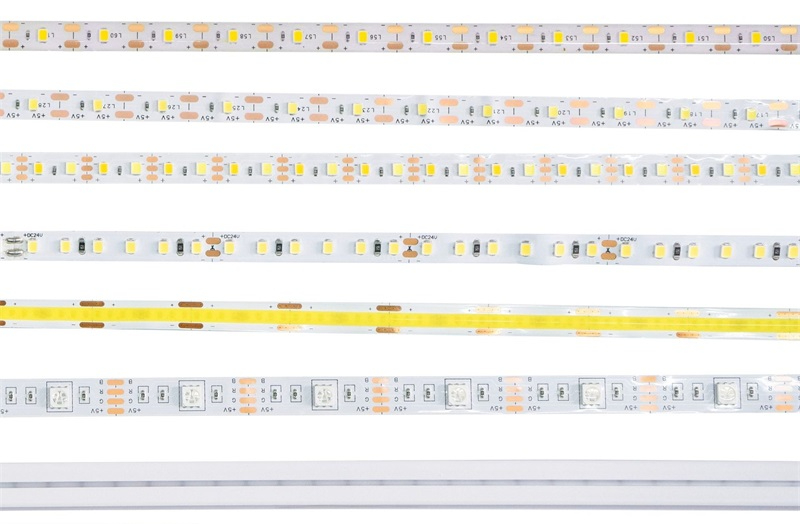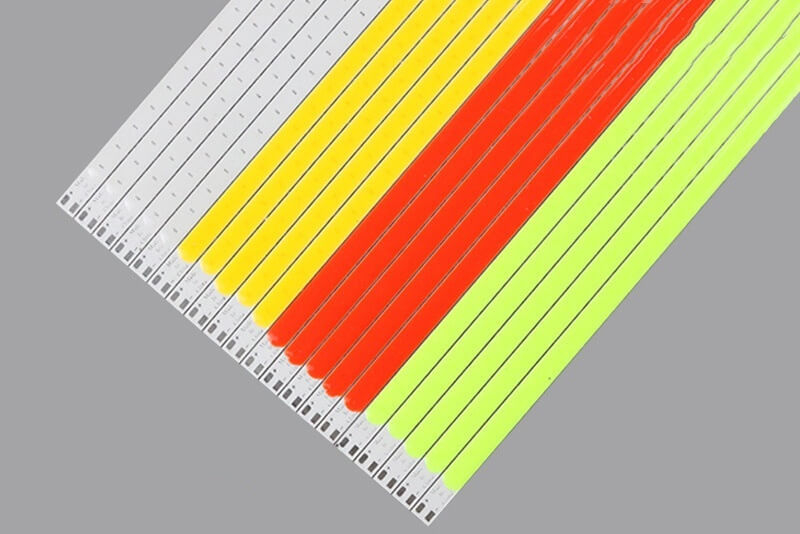LED strip lights have become a popular choice for both residential and commercial lighting due to their versatility and energy efficiency. However, with the wide range of options available in the market, it can be challenging to distinguish between high-quality and subpar products. This guide will help you identify the key characteristics of good LED strip lights and what to avoid when making a purchase.

Key Characteristics of Good LED Strip Lights
-
LED Quality
- Brightness and Consistency: High-quality LEDs provide consistent brightness and color across the entire strip. Look for LEDs that offer uniform light without flickering.
- Color Rendering Index (CRI): A higher CRI (above 80) indicates better color accuracy and quality of light. High-CRI LEDs make colors appear more natural and vibrant.
-
PCB (Printed Circuit Board) Material
- Thickness: A thicker PCB (at least 2 ounces) ensures better heat dissipation and durability. Thinner PCBs are prone to overheating and can reduce the lifespan of the LEDs.
- Material Quality: High-quality PCBs are made of pure copper, which enhances electrical conductivity and overall performance.
-
Chip Quality
- Brand and Specifications: Reputable brands like Epistar, Samsung, and Cree produce reliable LED chips. Check for specifications such as lumen output and efficiency.
- Chip Size: Larger chips generally offer better brightness and heat dissipation. Look for chips with a size of at least 2835 or larger.
-
Adhesive Quality
- Strength and Durability: Good LED strip lights use strong, durable adhesives that ensure the strips stay in place over time. Poor-quality adhesives can cause the strips to peel off surfaces.
-
Heat Dissipation
- Design and Materials: Effective heat dissipation is crucial for the longevity of LED strip lights. Look for strips with aluminum backing or other heat-conductive materials to prevent overheating.
-
Waterproofing and Protection
- IP Rating: If you need LED strips for outdoor or damp environments, check the IP rating. A rating of IP65 or higher indicates good protection against water and dust.
-
Power Supply
- Quality and Compatibility: A high-quality power supply is essential for the optimal performance of LED strip lights. Ensure the power supply matches the voltage and wattage requirements of the strip.

Red Flags to Watch Out For
-
Uneven Lighting
- Strips that exhibit uneven lighting or color inconsistency are often indicative of poor-quality LEDs or manufacturing defects.
-
Poor Soldering
- Inspect the soldering points on the strip. Poor soldering can lead to connection issues and reduced lifespan. High-quality strips have clean, robust soldering points.
-
Inadequate Warranty
- Reliable manufacturers offer warranties that reflect their confidence in the product’s quality. Avoid products with short or non-existent warranties.
-
Lack of Certifications
- Look for certifications such as CE, RoHS, and UL, which indicate that the product meets safety and quality standards.

Practical Tips for Choosing the Right LED Strip Lights
-
Evaluate Your Needs
- Determine the purpose of the LED strip lights—whether for ambient lighting, task lighting, or decorative purposes. This will guide your choice in terms of brightness, color temperature, and flexibility.
-
Check Reviews and Ratings
- Research and read reviews from other customers. High ratings and positive feedback can give you confidence in the product’s quality.
-
Consult with Experts
- If you’re unsure, consult with lighting professionals or suppliers who can provide recommendations based on your specific requirements.
-
Request Samples
- If possible, request samples before making a bulk purchase. This allows you to inspect the quality firsthand and ensure it meets your standards.
Conclusion
Choosing the right LED strip lights involves careful consideration of several factors, including LED quality, PCB material, chip quality, adhesive strength, heat dissipation, and power supply compatibility. By paying attention to these details and avoiding common red flags, you can ensure that you invest in high-quality LED strip lights that offer longevity, efficiency, and superior performance.
For more detailed information and to explore a range of high-quality LED strip lights, visit ZBL Lighting.
If you need assistance from professionals, feel free to contact us. We are here to provide you with expert help and support for all your needs. Don't hesitate to reach out to our team for personalized assistance and solutions. We look forward to serving you.



